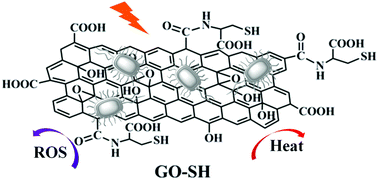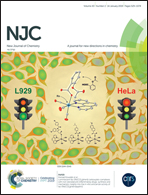Sulfhydryl functionalized graphene oxide for efficient preconcentration and photoablation of pathogenic bacteria
Abstract
Antibiotic resistance is rising to hazardously high levels in all corners of the world. Novel resistance mechanisms are emerging and spreading globally, threatening our ability to treat clinical infectious diseases. A growing list of infections, such as pneumonia, gonorrhoea, tuberculosis, blood poisoning, and food borne diseases, are becoming harder, and sometimes impossible, to treat as antibiotics become less effective. Obviously, there is a very pressing need for the development of novel agents to fight against bacteria without bacterial resistance. Herein, near infrared activated nanocomposites were synthesized by modifying graphene oxide with L-cysteine to release adequate heat for eliminating bacteria. The nanocomposites could effectively capture bacteria with their enhanced photothermal effect against bacteria. Analysis of the antibacterial mechanism showed that the nanocomposites could rapidly disrupt the bacterial membrane through their knife-edge, hydrophobic moieties, and thermal disintegration. Importantly, hemolysis and cytotoxicity assays confirmed that the nanocomposites possessed excellent biocompatibility. These findings highlight the promise of the highly versatile multifunctional nanoantibiotics based on graphene against bacterial infection.



 Please wait while we load your content...
Please wait while we load your content...